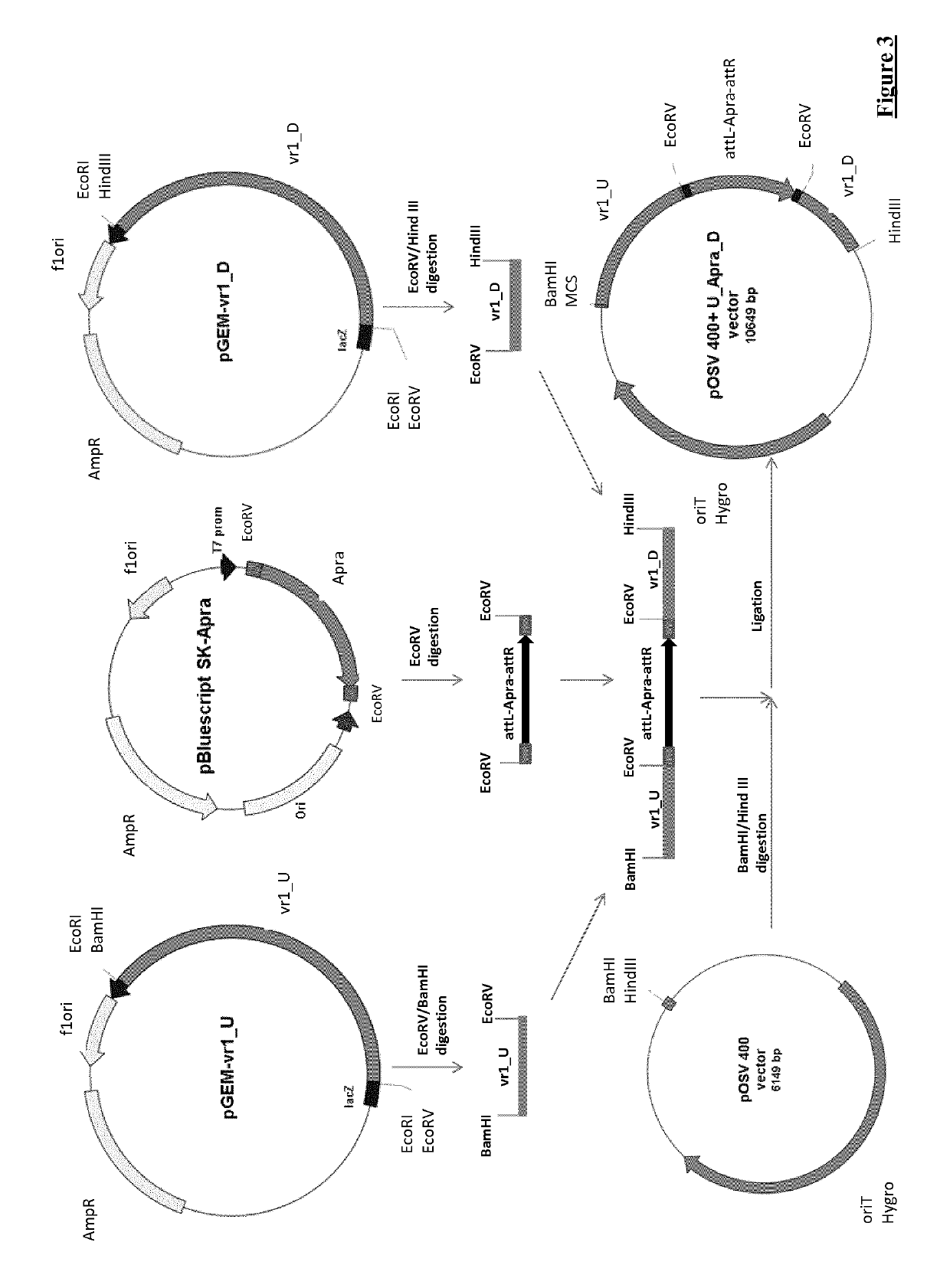Microorganisms and methods for producing vanillin
a technology of microorganisms and vanillin, applied in the field of genetically modified strains, can solve the problems of unwanted consumption of vanillin by endogenous enzymes
- Summary
- Abstract
- Description
- Claims
- Application Information
AI Technical Summary
Benefits of technology
Problems solved by technology
Method used
Image
Examples
example 1
l Characterization of the Proteins Encoded by the Genes vr1, vr2, vr3, vr4 and vr5
[0145]To ascertain the enzymatic activity of gene products from vr1, vr2, vr3, vr4 and vr5, these genes were cloned in the cloning site of the pSET152 expression vector (shown in FIG. 5) under the control of the ermE promoter (erythromycin resistance gene).
[0146]In particular, the sequence SEQ ID NO 16, corresponding to a BglII_ermE_RBS_vr1_XbaI sequence, was introduced into the pSET152 vector. The coding sequence of vr1 gene is under control of the promoter ermE. The sequence was cloned into the BamHI / XbaI cloning site of pSET152 by added BglII forward primer and XbaI revers primer.
[0147]Recombinant plasmids were introduced and heterologously expressed in Streptomyces lividans. Recombinant strains of Streptomyces lividans were cultivated for 24 hours at 30° C. in a TSB liquid medium comprising 10 mM vanillin; samples of the culture medium were taken regularly during the incubation and analysed by high...
PUM
| Property | Measurement | Unit |
|---|---|---|
| particle size | aaaaa | aaaaa |
| particle size | aaaaa | aaaaa |
| column temperature | aaaaa | aaaaa |
Abstract
Description
Claims
Application Information
 Login to View More
Login to View More - R&D
- Intellectual Property
- Life Sciences
- Materials
- Tech Scout
- Unparalleled Data Quality
- Higher Quality Content
- 60% Fewer Hallucinations
Browse by: Latest US Patents, China's latest patents, Technical Efficacy Thesaurus, Application Domain, Technology Topic, Popular Technical Reports.
© 2025 PatSnap. All rights reserved.Legal|Privacy policy|Modern Slavery Act Transparency Statement|Sitemap|About US| Contact US: help@patsnap.com



